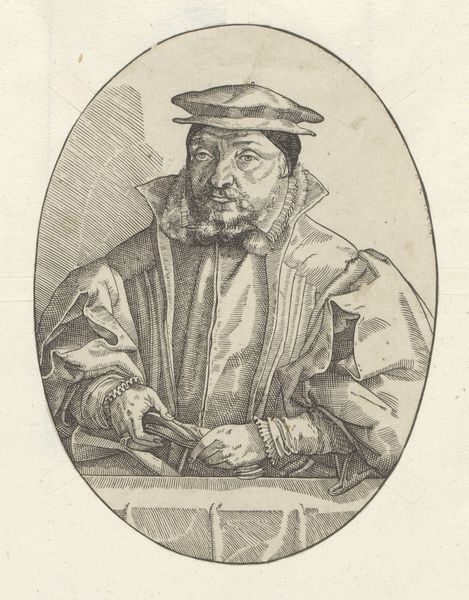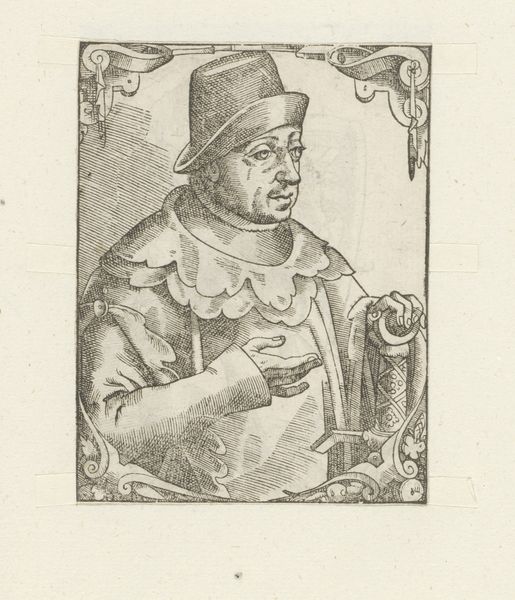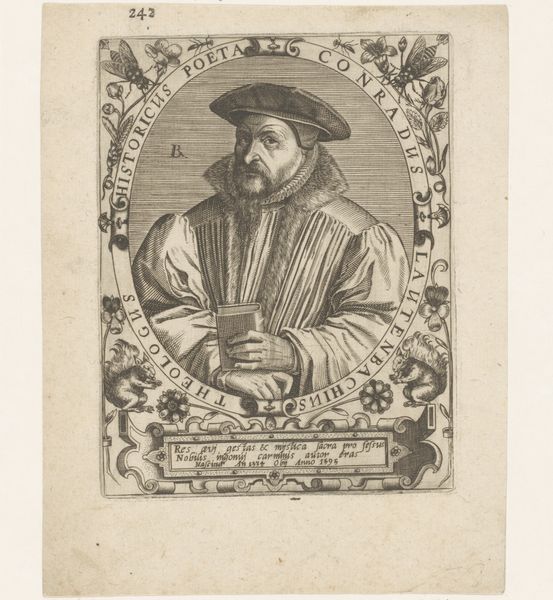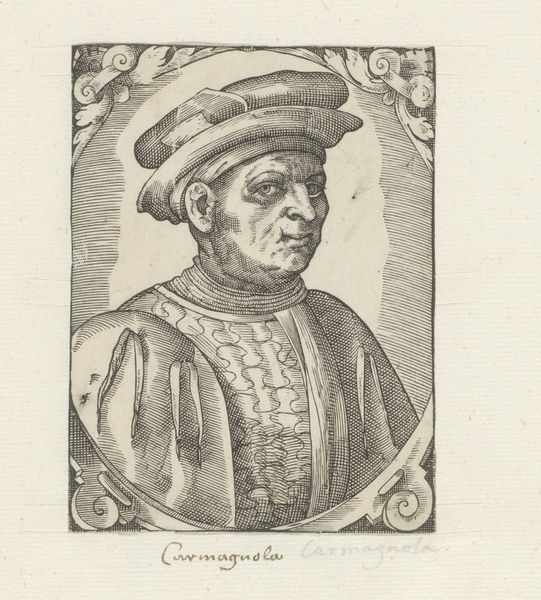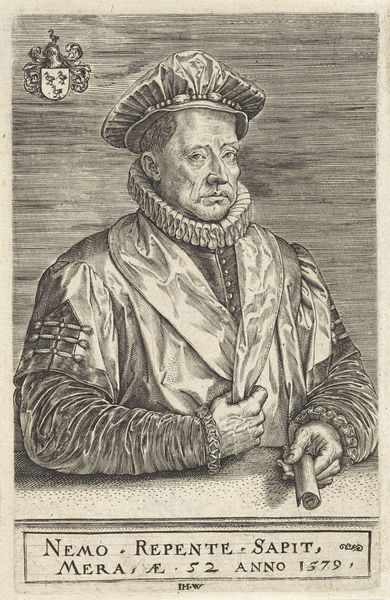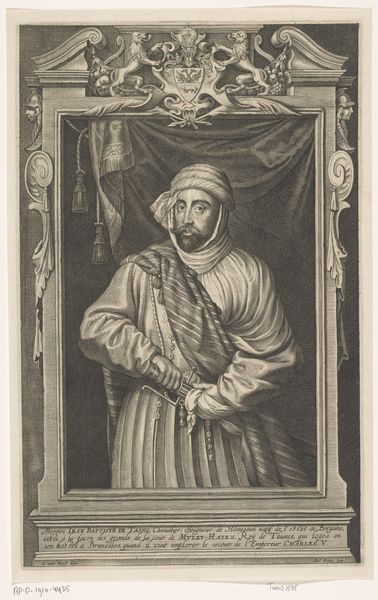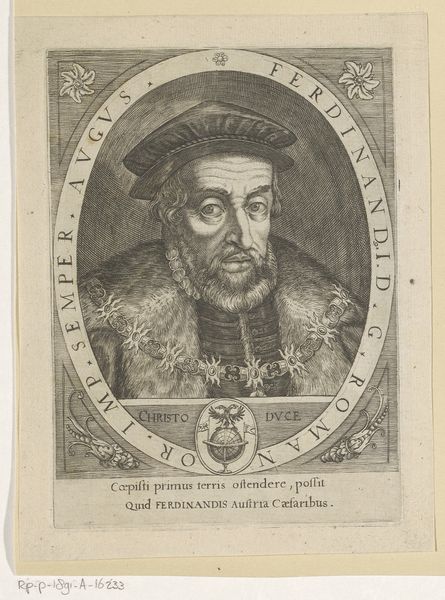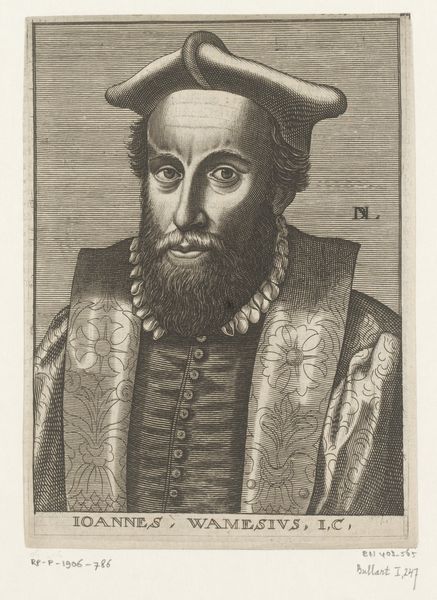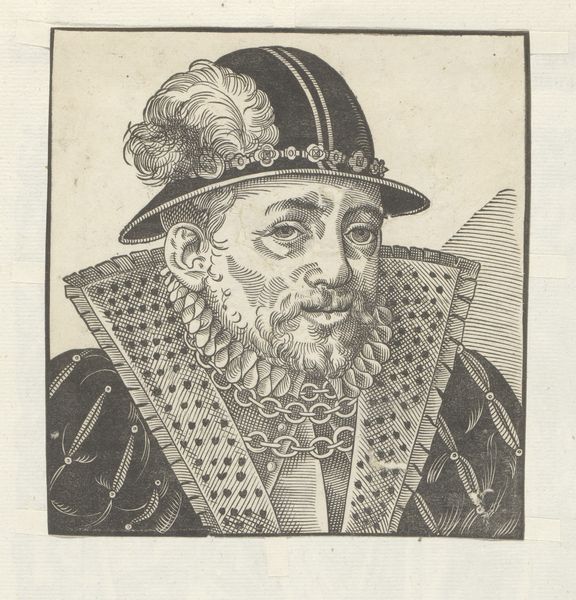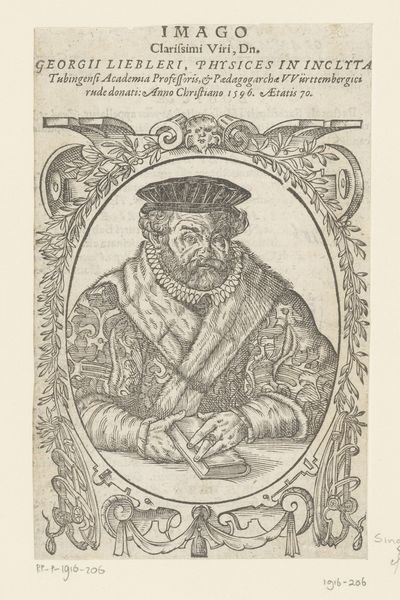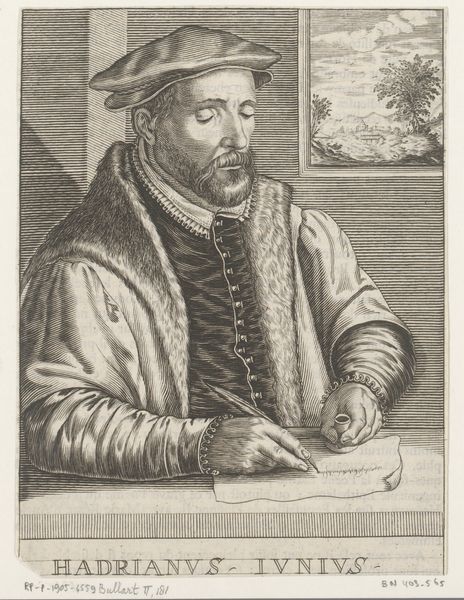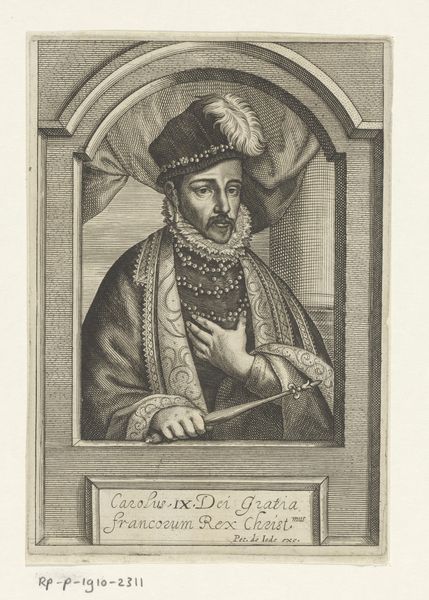
print, engraving
#
portrait
# print
#
old engraving style
#
figuration
#
form
#
11_renaissance
#
portrait reference
#
line
#
portrait drawing
#
northern-renaissance
#
engraving
Dimensions: height 169 mm, width 113 mm
Copyright: Rijks Museum: Open Domain
This portrait of Sybillot was made sometime around 1600 by Thomas de Leu. It’s an engraving, meaning that the image was incised into a metal plate, likely copper, then inked and printed. The network of fine lines creates subtle gradations of light and shadow, which is really the engraver’s art. Look closely, and you’ll see that the lines are deeper and more closely spaced where the shadows are darkest. The whole thing amounts to a remarkable feat of manual dexterity, using specialized tools like burins and scrapers. Engraving was a highly skilled trade, often closely allied to the printing industry. But it also had a clear connection to the fine arts. Engravers were often called upon to reproduce paintings and sculptures for a wider audience, functioning as key players in the early modern art market. Here, we see that tension play out, between the unique creative act and the reproductive capacity of the print. The image exists in multiple, yet each would have required immense skill and labor.
Comments
No comments
Be the first to comment and join the conversation on the ultimate creative platform.
